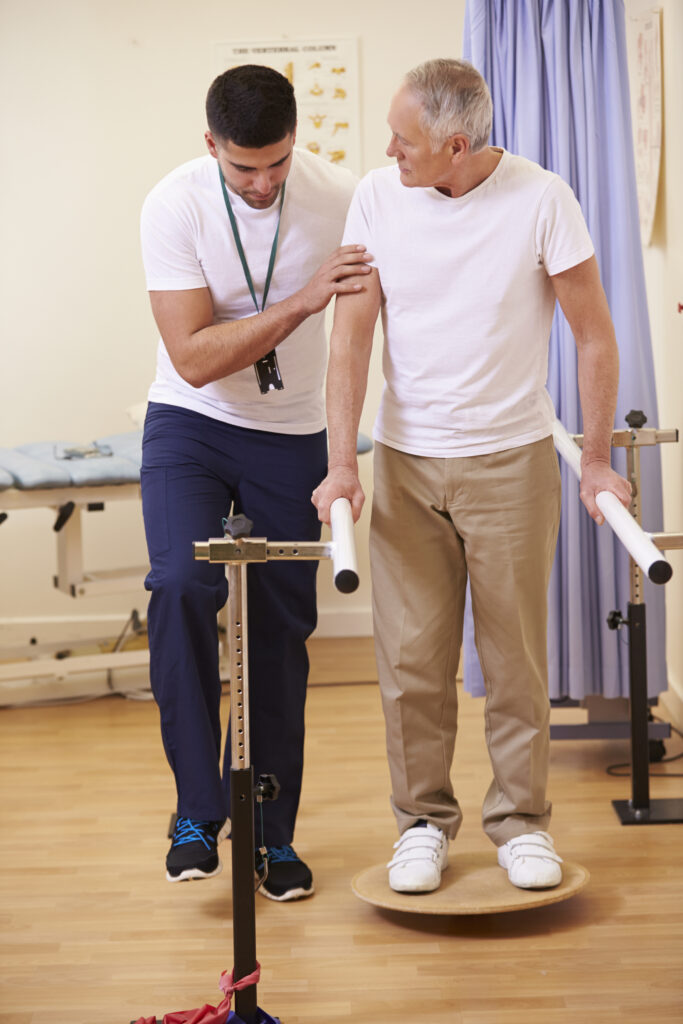A version of this article was previously published on Pharmaphorum.
By now, your social media feeds are probably full of COVID-19-related news articles, opinion pieces, and memes (not to mention conspiracy theories involving 5G or Bill Gates). Reminders of the impact of the pandemic on our healthcare system, economy, and day-to-day lives are everywhere. To date, most of the focus has understandably been on the immediate effects of the virus and the efforts to enforce physical distancing and develop a vaccine. However, we are getting to the point where we need to start considering the long-term effects on the healthcare system when making decisions.
Long-term physical effects of COVID-19
 Delays and cancellations of elective procedures are already resulting in backlogs that could take years to clear. Delaying surgeries such as joint replacements, along with complementary services such as physiotherapy, could result in the patients’ conditions deteriorating to the point where they will require substantially more medical resources in the future than if they had undergone the surgery and received physical rehabilitation in a timely manner. Further, some “semi-elective” surgeries, including for hematological and thoracic cancers, are being delayed on a case-to-case-basis, with potentially disastrous results.
Delays and cancellations of elective procedures are already resulting in backlogs that could take years to clear. Delaying surgeries such as joint replacements, along with complementary services such as physiotherapy, could result in the patients’ conditions deteriorating to the point where they will require substantially more medical resources in the future than if they had undergone the surgery and received physical rehabilitation in a timely manner. Further, some “semi-elective” surgeries, including for hematological and thoracic cancers, are being delayed on a case-to-case-basis, with potentially disastrous results.
There are also delays in routine cancer screenings such as pap smears, mammograms, and colonoscopies. This is likely to result in higher rates of late-stage cancer diagnoses post-COVID-19. Since early detection of cancer is by far the best way to beat it, we have to prepare for higher numbers of cancer-related hospitalizations and deaths in the medium-term future.
In general, family doctors and pediatricians are seeing fewer patients right now, and even if patients have access to a doctor right now, many choose to stay home unless there is an emergency. As a result, worrying declines in routine vaccinations have been reported in the US and elsewhere. Even before this pandemic, we were seeing clusters of measles cases in certain countries where vaccination rates were low. With COVID-19, I predict the rates will dip below the threshold for herd immunity in many parts of the world. Even after there is a vaccine for COVID-19, we may be fighting polio again. It’s a scary thought, but advanced planning will be key to stay on top of these secondary effects of the pandemic.
Mental health aspects
In addition to the above, we are already seeing the acute effects of COVID-19 on the mental health of both healthcare providers and other frontline workers, and on the general population. The rates of PTSD, anxiety, and depression are likely to keep rising the longer lockdowns are enforced. Related stressors such as fear of becoming sick, sudden unemployment, or having to homeschool young children will only add fuel to the fire. Although we may never know the true rates, we can assume that domestic violence is increasing during quarantine, causing further emotional trauma.
There may also be a risk of healthcare providers lumping all mental health disorders under a “post-COVID-19” umbrella. Underlying or co-morbid conditions could become harder to diagnose. Whether or not there will be a second wave of COVID-19 itself, there will be a second wave of physical and mental health issues, and we need to start preparing for this now.
What can we do?
It is clear that all stakeholders, including governments and hospital administrators, need to work together to minimize any adverse long-term effects on the healthcare system and patients. One can argue that, when relaxing physical distancing guidelines or lockdowns, we should prioritize reopening medical and allied health practices well before restaurants and beauty salons. Getting a mammogram or going to the dentist for a checkup might not be ‘essential’ in the same way as undergoing emergency surgery for an aneurysm. However, not doing those things for years can cause life-threatening conditions to go undiagnosed until it is too late.
For pharmaceutical companies that want to help their customers here and now, there are multiple ways. The appetite for medical education on how to adapt clinical practice to COVID-19 and treat patients “virtually” remains high. Contrary to what many Pharma representatives think, most healthcare providers (except those working directly with COVID-19 patients such as intensive care specialists) are actually less busy than pre-COVID-19. They welcome the opportunity to attend webinars or other types of online medical education events from home, and to be able to network and share best practices with colleagues from across the country.
The needs of healthcare providers and their patients during this time will vary greatly based on their conditions and the available treatments and resources. Therefore, to determine other ways that Pharma can help, close (virtual) collaboration with not just expert KOLs but also community physicians, nurses, allied health professionals, and patients/caregivers is critical.
Lessons learned from the pandemic so far
Being a glass-half-full-person, I think it’s important that we don’t lose sight of the positives and the lessons learned in the last few months. The pandemic has shown that a lot of jobs can be done successfully (and often more effectively) on a remote basis. This will hopefully translate to more flexibility for workers in the future. Especially, this will benefit those with physical disabilities or other health conditions, who have long advocated for work-from-home policies.
The rise in telehealth is another interesting side effect of the pandemic. Here in Canada, many provinces are introducing new billing codes for telehealth, and we are quickly learning about the pros and cons of telemedicine for different types of patients. From a physician’s perspective, there may be substantially lower rates of no-shows. A follow-up appointment that might take 30 minutes in person can be done in <10 minutes over the phone. From the patients’ perspective, being able to refill a prescription in 5 minutes without having to leave the house might mean that they don’t have to take several hours off of work, find a babysitter, or skip lunch.
 Finally, the development of fully virtual congresses is another interesting outcome. Born out of necessity, many of these have actually been more successful than their in-person counterparts in terms of attendance and engagement. I predict that, as the technology keeps improving, we will see more virtual congresses, conferences, and other learning and training events, even after we are able to safely meet in person again.
Finally, the development of fully virtual congresses is another interesting outcome. Born out of necessity, many of these have actually been more successful than their in-person counterparts in terms of attendance and engagement. I predict that, as the technology keeps improving, we will see more virtual congresses, conferences, and other learning and training events, even after we are able to safely meet in person again.
To find out how Impetus Digital can help transform your events into the digital sphere, book a demo with me by clicking the button below.
About Impetus Digital
Impetus Digital is the spark behind sustained healthcare stakeholder communication, collaboration, education, and insight synthesis. Our best-in-class technology and professional services ensure that life science organizations around the world can easily and cost-effectively grow and prosper—from brand or idea discovery to development, commercialization, execution, and beyond—in collaboration with colleagues, customers, healthcare providers, payers, and patients.

